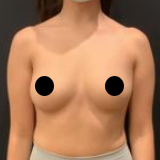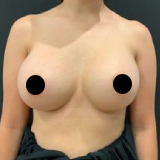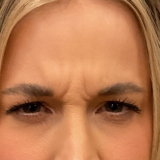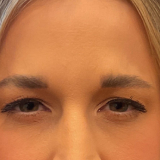Episode 83: BBL Trends with Dr. Matt Nykiel
Tune into this week’s episode of Plastic Surgery Untold, exploring the fascinating evolution of BBL trends with amazing guest Dr. Matt Nykeil. From the past obsession with sheer size to the emerging trend of seeking the Modern BBL: balanced, athletic, and toned. Join Dr. Franco, Dr. Arredondo, Dr. Nykiel, and PA Gilbert as they delve into the shifting ideals and evolution of BBL standards as they discuss the pursuit of a new aesthetic paradigm. The modern BBL will keep people guessing, “Are they living that Squat life or that surgery life”?
Transcript:
Welcome back team to Plastic Surgery Untold. We actually got a special edition here in Miami. We’re at the esthetics meeting, the biggest esthetic meeting in the world, here in Miami. So, the second plastic surgery capital of the world, after Austin, sorry Miami, but since we’re here, we actually have the pleasure of having one Matt Nykiel. We got our usual suspects. Dr. Hernando, when Gilbert signs the PAG, if you will. We’re going to start off, what better topic in Miami than talking about BBL trends and something that we talked about in our course yesterday, Matt. So maybe kick us off a little bit. I know that you’ve been seeing a lot of BBL reversals and what that actually means. But also, we talked about some some different kind of requests we’re getting from patients.
Well, thanks, Johnny. Always good to see everybody here at the meeting. So thanks for having me on the podcast. I appreciate it. I think there’s an interesting evolution going on with BBLs, right. I think previously, let’s say past five years, it was all about how big can you get? But it was never big enough for many people, I think. Right. That was the primary goal. And I think we’re seeing a general shift. Truthfully, I think probably for the better. I think anytime you’re at the end of spectrums, I think fallen back to more than midlines, probably a little bit more beneficial. So in general, we’re seeing people sort of coming in looking more for athletic or sort of toned. Not necessarily big, but I think more balanced type of bbls. I would say that’s one trend. Right? And, we talked a lot of body balancing yesterday and lots of different things about that to your to your point. Yeah, I thought we had a great talk that you and I gave together. And I thought sort of centering it around balancing the body is, I think forefront one of the things that’s being done the most, at least out on the West Coast. I assume it’s probably similar in Texas. Although everything is bigger, everything’s bigger in Texas but but even with us, we’ve seen a huge trend and and we talked about a little bit yesterday, even a trend more of just as, like you’re saying this this big volume, but but more of this athletic toned butt, and and that’s why we got Gilbert here, because we talked about cellulite, we’ve talked about skin laxity. So, a lot more kind of interesting intricacies if you will than just fill in the butt.
I agree with you. I think it’s sort of along those lines, moving in that evolution sort of period, at least out on the West Coast, what we’re seeing is a lot of people sort of wanting BBL reversals. And I think it’s a trending topic that that moves pretty well on social media and people look at it. And I think that all kind of sort of flows together, which is just people are no longer interested in having the biggest butt possible or huge bucks or being super hippy and round. They want it sort of back to more of I think a central sort of, just elegant hourglass sort of figure. It, one of the things that we talked about yesterday and because I think sometimes BBL reversal gets misused and kind of a misnomer. And I thought you had a great point yesterday that a lot of times when people say BBL reversal, they’re just trying to enhance their overall shape and it’s you know, either being too hippy, still being square, because a lot of times it’s not just making the butt smaller. It’s really trying to improve that overall shape and and BBL reversal I think people get misused and a lot times be treating of cellulite, kind of reshaping the buttock, reforming it, sometimes treating some skin laxity stuff. So, something that I think we’ve all seen in our practice so far. You know, every other aspect of the body, we talked about making things youthful, making things younger, fresher, and more toned. And that’s not just volume. I think that’s what people are seeing now. And that’s how we’re starting to address it. We’re addressing the skin laxity, we’re addressing the cellulite. So it’s a complete game changer. It makes it look, rolls back the clock almost, makes you look like that basketball booty kinda.
Yeah. And yeah, I’d say from from a patient standpoint, right, from from just sort of a general public standpoint, I think when they use the term BBL reversal, they look at it and they say, I’m not happy with this result. And I think sure, you could say, well, yeah, that’s just because you know, every once awhile, it’s just a huge butt that we need to bring that volume down. But I think nine times out of 10, when people look at it and say I need a BBL reversal or I’m not, I’m not happy with this, you know, they may not know what they’re looking at. But sort of going back to our talk, it is fullness at the A point, it’s squaring of the buttocks, it’s a straight torso, it’s not having that shape. But to them, it’s simply, I want a BBL reverse. I want to change this. But to us, we do this a lot. I think it’s actually, the frameworks not too bad. We just need to touch a couple things up. And again, just balance a body, get things flowing a little bit better, just to improve on the result. And we’ll be happy. And maybe we can we can touch on two things. And one is, you know, and obviously it’s been been near to my heart if you’ve been following us, you know, some of the weight loss stuff. Most of us, like myself, gained a lot of weight over COVID and I think people forget, when you transfer fat to the buttock, if you gained 30, 40 pounds, that butt’s gonna get bigger.
Oh absolutely, COVID was, I think a difficult time for many people and I think we saw a lot of people, when you’re at home and there’s really not a lot to do, I think it’s just, people gained weight, they couldn’t go out, you couldn’t exercise or, it just it is what it is, and you’re absolutely right. When you when you gain weight, right, fat cells increase or decrease based on caloric intake and the results are going to change and I think in general, if you showed a photo of of my before and then my after, I was 30 pounds more in my after, I think I’d be hard pressed to say oh, I like how my after looks better. Um, so right, sometimes it’s just centering that discussion on lifestyle. And that’s pretty cool because this is some of the things with with some of the new medications out there that you can actually change and direct that and get people. And I think it doesn’t change anything from our other surgeries. We want people to be at their ideal weight before we make a decision of where we want to go, because sometimes, it may be little touchups at that point that they need.
But I think you’re absolutely right, I think that the best type of body contouring is going to happen when we have, your sort of targeted, relatively targeted body weight, and your relatively targeted physique. I think if your muscle tone is sort of better, or when they are at its peak when you’re coming in, we can really do some neat things sculpting around the muscles creating some shape. If we’re relatively fanning 5, 10, 15 pounds of of your weight when we’re doing the body contouring, I think you’re just gonna see a better result I think. You won’t see a bad result if you lose a bunch of weight afterwards, but it does make it more difficult. It’s harder for us to sort of predict the future of what, how things are going to lay, fat store wise as you lose that weight. And what about that, you know, that this airbrush idea of of treating cellulite and I know there’s a few different options out there, but but it’s something that’s really seem to come more into the forefront recently as leggings are still a thing, as again, people are looking for more an athletic look, rather than than just a massive booty. Is that something that that you’re seeing in your practice? Absolutely.
I want to say that, you know, social media, again, just drives that that whole market because you know, so many of our patients bring in their their wish photos, and everyone has this, like ideal athletic shape that they’re trying to achieve. And so I think it’s it’s very much the driving force behind, you know, treating all these other aspects of that ideal shape, with the cellulite, with the skin laxity, just trying to get that really nice, smooth butt. I actually feel that that cellulite is continuing to come more and more into sort of the procedures that we’re doing, it’s getting pushed more. And you said, Well, why is that? And I know there’s some new products that come out. But I think another reason that you’re seeing that is we have improved with radio frequency, whether that be BodyTite or Renuvion. And so we’re starting to tackle skin laxity. I feel pretty comfortable telling patients that we’re going to see about a 30% soft tissue skin envelope tightening. I don’t know what you think, Johnny but. It’s so funny because I’m always in that same range. I think it varies from body part to body parts, but somewhere between 20 to 30%, depending on the specific body part I think is is super realistic. There are a few people to get maybe a little bit more arms neck stuff, I think, you know, really, really respond. And it’s funny that you bring that because we’ve been working on this whole concept of this luxury legs. And I think this is part of that BBL evolution and and really making sure that you’re addressing all the things because it’s cellulite, skin laxity, and volume.
And to your point, I think in the past, the only thing we addressed was volume, volume, whether that be taking it away, or removing it right? So I think there was this, when you got to the skin envelope and you start to say, well, is this skin laxity? Is this sort of cellulolytic sort of superficial facial dimples, etc? Well, now actually, I think we’ve gotten a lot better at actually tightening and addressing that skin envelope. And so now I think there’s more of a focus or at least people saying, well, my skin’s pretty tight. But But look, because I still have now some cellulolytic dimples that maybe wasn’t being noticed as frequently before, because we had skin laxity, etc. And I think that’s part of the reason to, that you’re starting to see this upward continuing trend of what are we going to do to address the subject because we’ve we’ve our liposuction technologies improve, our fat transfer technologies improve, we’ve we’ve started to be able to tighten skin. What’s left? Well, now we’ve got to address the cellulite. And because a couple of last issues, I want to make sure that we get in before, I know you gotta run cause you got a busy day here at ASAPS. But, you know, one is, into something that I adopted from from you, you know, we’ve incorporated a lot more high definition liposuction into our practice, which we’ve been doing for many years. And I think that goes to some of the trends in BBL stuff, because, you know, we hear, I get asked all the time, and we got asked yesterday, has our fat transfer and BBL, you know, requests decrease. Both of us were emphatically no, but but I think the way people requested and so some of the high definition has definitely been incorporated, something you’ve been doing for a long time, and definitely something athletic on the front, athletic on the back.
Yeah, I think one of the major advances in liposuction, I think one of the huge major advances in liposuction, was that the technology improves and the technology improved in a way that we were able to more easily remove fat cells, right? And once that happened, no longer was was all your energy being expended on simply trying to break fat, get fat out. Your energies now can be expended on alright, let’s look at this artistic picture. Let’s actually see this, where can we make improvements? Where can we create shadow and definition? Where can I actually give some sculpture back to the body? And in some ways actually almost restore a better looking figure that was not possible 10, 10 years ago at all. And Shawn, I know you you see a lot of weight loss patients in our practice, some of the things that that seems that to be a trend in, at least in our practice or in Austin is, you know, with so many people using some of these weight loss medications, you know, you look great, it really treats some of the visceral fat, but we’ve definitely seen people lose volume in the face and in the butt and so definitely seen people not necessarily trying to get something a whole lot bigger than they were, but just trying to get them back to where they were. Right right, trying to roll back that clock and I think that’s where the skin laxity has become such a big focus for us too.
Now with all these energy devices, we can do the fat transfer, we can increase that volume, but that, you don’t want to increase so much, you don’t have, you don’t want increase that much. So when you get that skin envelope to shrink, everything just looks so good. And then when you take away from the right spots, it’s the positive and the negative spaces that work so well together to really give that look that everybody’s looking for. Yeah. And I feel like I wouldn’t be doing our listeners a service if we didn’t at least address BBL safety, because that’s something that, you know, was always in the news and something that I think has just gotten so much better over time and still occasionally get the question, you know, are BBLs safe? And and I think in the right hands by the right provider, doing doing the right things, I think they’re absolutely safe. Yeah, I agree. I think, obviously, in general, there’s been a big, I think the paradigm shift is just simply this week, we are, we do not inject fat into the into into the buttocks muscle. Right. And I think, which is which is different than previously previously, you know, 5, 10 years ago, the discussions were how do you get that that into the muscle, for two reasons, one, that the blood supply was better so we felt that the takeaway was better. And two, as we increase the volume of the buttocks, we increase the the just the the result, the esthetic result and now that we have shifted away from that, obviously, for reasons of fat embolisms, etc, you have seen a general shift in the safety of it. So I would say yes. And so many things that we do, I mean, there’s there’s new technology out, there’s better understanding of anatomy, I think the buttock anatomy is more complex than than people appreciate it in terms of, of the different layers. That’s why, you know, I think some of the cellulite treatments have gotten better, because we understand some of those fascial bands, some of those things, and, and the way that we treat this in terms of a lot of stuff, and we spent four hours talking about it yesterday. It just shows you how complex, or or that we just like to hear ourselves. And I think that’s true. And I think that’s true with a lot of things. Right?
I think, you know, I think that’s what sort of separate someone that like, like you, myself, that that does something all the time versus someone that doesn’t do it as frequently, right? I think that that’s what’s the difference between an expert versus someone who’s not is, is it on the surface, you say, yep, that’s a pretty straightforward anatomy. But I think like gaming, you can get into the complexities and you can get into the small fine details. And I think a lot of what separates a, because we were talking about revisions earlier today, what what separates a good or average result from a great, excellent result. It really wasn’t that much. Right? It was it was sort of going in and was just doing it was knowing and seeing it all to just tweak a couple little things. And then you took that, yeah, that’s the result of hey, that’s actually that’s really good. How did you do that? It was just those couple of little details that that you know, to look at the complex things. And it was so funny because, for those of you listening and don’t know, Dr. Nykeil and I do teach a course here at ASAPS on BBLs and butt implants. And we got, we got two courses and one of the super interesting parts of this was that, you know, and it was his idea. We started a page, started as a page, of all the things that we’ve changed in BBL since we started the course, what, five years ago. I think it’s up to three pages now because there was too many bullet points. It just shows the true evolution. So some of it is society trends, some of it is just stuff that we’ve learned to make it safer, more efficient. And it’s funny when people came up and talk to you, and they were showing their results and why they weren’t getting what you were getting.
It’s funny, just what you were talking about, the subtle little changes, you’re like, hey, move your incision down just two inches, and you’re not going to get that, you know, hey, rotate them just a little bit like this when you do your your fat injection, and you won’t get that problem. And it’s funny how just such a tiny, tiny little difference makes a big difference, especially when we’re just looking at an athletic butt and not just the, you know, the days of just trying to pump as much fat as you possibly can into it. But I think it, has gone for the most part. I would, to me, I think there’s always gonna be exceptions to the rule. But But yeah, I would say for the most part, that’s not something that that’s really getting done as much, just I think general trends, etc. And I think you’re moving more towards death. Maybe just to leave people with some some last kind of tangible stuff who are listening to this. How would they go about in terms of like, an order stuff and this is something we talked a little about bit about. So if they have skin laxity, cellulite, you know, want a BBL? Is there a specific order? I’d love to get everybody’s kind of feedback in terms of this. You know, if they had a BBL in the past, is it too late to treat skin laxity cellulite or are there some options and and how would they go about in terms of like a progression? So I mean, I think in general, anytime you use the term skin laxity or, do we have loose hang skin that that needs a different type of adjustment of abdominal plaster, your tummy tuck, or or is. Well, we’re live here. *laughing*
So I think, you know, that’s, again, so that’s the question is, is it a tummy tuck? Is it not? Is it skin laxity, that that that we can treat?
I think a large question is, it’s an individual basis. Right? What is the major sort of issue that we’re dealing with? Is this a fat issue? Is this an adiposity issue? Is this a loose skin issue? Is this a lack of volume issue? And I think that really sort of individualizes it to the person, I think, as far as doing cellulite on people who have pretty heavy BBLs. I think it’s very straightforward. I think we do it all the time. I’m very happy with our with our results on it. Do I think it’s improved? There’s definitely a lot of info out there that says cellulite can’t be improved. I don’t know where that that that sort of misnomer came from. I think it comes from the fact that it’s unrealistic that you can get every single piece of cellulite out in one treatment. And I think that in general, you will see improvements. And sometimes you may need to do more than one treatment on site. But that’s okay. Because you’re constantly moving this in this positive direction. I think that may be why that that exists. But But I think overall, it’s a very treatable thing now, Gilbert, I just think that, you know, approaching this as a team, you know, surgeon and then extender, being able to address all different aspects. This is really just the beginning of the evolution of BBLs and, you know, just cellulite and it’s just in its infancy. And I’m really excited to see where it goes from here. Dr. Redondo?
I feel like I’ve really enjoyed when we have the cellulite treatment started before surgery because I feel like those dimples sometimes get worse when you add a significant amount of volume. And so I’ve been, I’ve liked that as part of the algorithm. But I think when you come back later, I think it also it also still looks good. So sometimes it’s just more patient dependent, kind of like you were saying, like, what are our major goals that we’re trying to accomplish, what’s really their goals, and so then sort of addressing you know, the treatment algorithm for them. What’s going to be super interesting and Nykeil and I have talked about and we’re out of time here so we’ll save it for another day, gotta leave you a little teaser, but some ideas of how we can treat cellulite and maybe do a little expansion to help with that butt stuff, so we got some cool stuff coming and some trials stuff that we’re going to do to to keep making that butt better every day. So, thank you guys for tuning in. Dr. Nykeil, thanks for taking time out of your busy schedule to join us. Plastic Surgery Untold, greatest podcast in the world, is voted by us and my mom, but we’ll see you guys soon. All right. Bye.
Do you want to do a quick like intro of, cause, we just, are you not doing who they am or where the docs from? But we can, yea you want you to just so we can. Is that cool? Yeah, yeah, yeah. You don’t mind clipping at the beginning? Not a problem. Okay. Yes. Do you wanna just just introduce introduce, say he’s from… Okay.
All right, guys. I want to introduce Dr. Matt Nykeil from Southern California, SoCal plastic surgeon, you can follow him @SoCalplasticsurgeon on Instagram. He’s a little Instafamous if you don’t know him, but you probably do. Thanks for joining us. You wanna tell us just a quick little bit about yourself. Well, thanks for having me, guys. I love being here. I’m Dr. Nykeil. We have offices in Newport Beach and Upland, California. So we’re in southern, sunny Southern California. And pretty much, our specializations are liposuction, fat transfers, body contouring, I think is really what we do the most. And so I think that’s what we’re going to talk about here. Right. And that’s why you were invited to ASAPS to teach other plastic surgeons your pearl, so appreciate you teaching plastic surgeons around the country your nuggets. Thank you.





